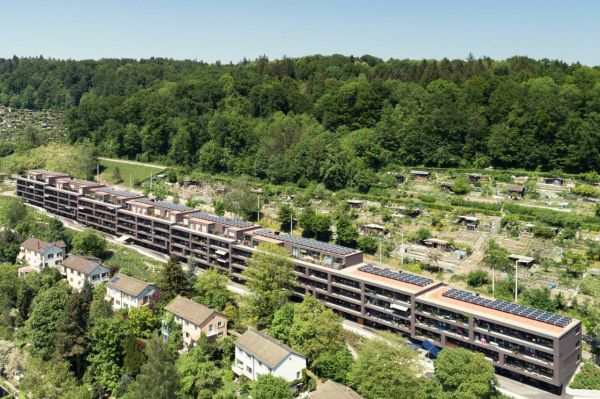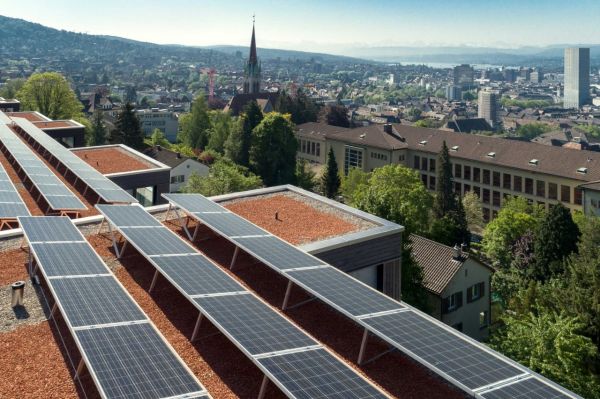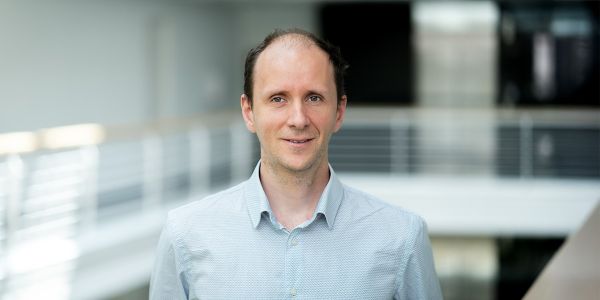- 520 MWh heating requirement per year
- 120 kWp PV output
- 120 MWh PV yield per year
- 100 per cent carbon-free
The dark brown residential block on the hillside, with a view over the city of Zurich, screens out virtually all of the street noise. On Tièchestrasse, high up on Käferberg with views over the city of Zurich and the lake basin, the Baugenossenschaft des eidgenössischen Personals (BEP) has created a new residential development with more than 70 cooperative apartments.
The requirement for the new development was that it should be built to the Minergie-P-Eco standard. The client involved us in the project at an early stage as the contractor for planning, financing and implementation. Since completion, we have also been responsible for the operation of the power generation plants. The apartment buildings, which adjoin each other, have similar energy requirements. The project was therefore ideally suited to the use of different technologies in its power generation plants and comparing them in practice.

Comparison of sustainable energy concepts
All of the Tièchestrasse buildings are connected to a photovoltaic system on their roof. They are equipped with geothermal probes and heat pumps for heat generation and cooling via free cooling as well as for hot water. One of the buildings also has a thermal absorber that conducts the solar heat back into the ground via a geothermal probe, regenerating the underground storage system. Regeneration improves the efficiency of the system.
The heat generation system in another building is intelligently controlled and incorporates weather data into its operation. Instead of an average 24-hour measurement based on past data, the system heats up when cold weather is expected or switches it off earlier when warmer temperatures are forecast.
A special CO₂ geothermal probe is installed in another trial system. Normal geothermal probes contain a water-glycol mixture and a different pipe system. The advantage of the CO₂ geothermal probe is that it is more environmentally friendly: CO₂ can also be used as a heat carrier in water conservation areas. In this geothermal probe, the CO₂ in the lower part of the probe is liquid. The heat transfer from the ground makes this evaporate and ascend to the probe head, where it condenses, releases heat and liquefies again. This works without any additional operating power.
Comfortable room temperatures, even when it’s hot
The geothermal probes can cover 100 per cent of the heating energy requirements for all of the buildings. The apartments can also be cooled at the same time. With free cooling, heat is absorbed from the apartments via the underfloor heating system, which then releases the energy into the ground via a geothermal probe. This regenerates the soil and improves efficiency in winter.

Attractive solar power for tenants
Residents are unaware of the different energy supply concepts, other than those who are specifically interested in them. What everyone is happy about, however, is the annual solar power credit on their electricity bill. Part of the tenants’ electricity requirements is covered by the photovoltaic system on the roofs. We use most of the solar power to operate the heat pumps.
Practical economic and environmental knowledge
Our project manager Pascal Leumann has been involved in the project from the outset. More than anything, he values the fact that the different energy supply concepts can be compared directly in practice .






